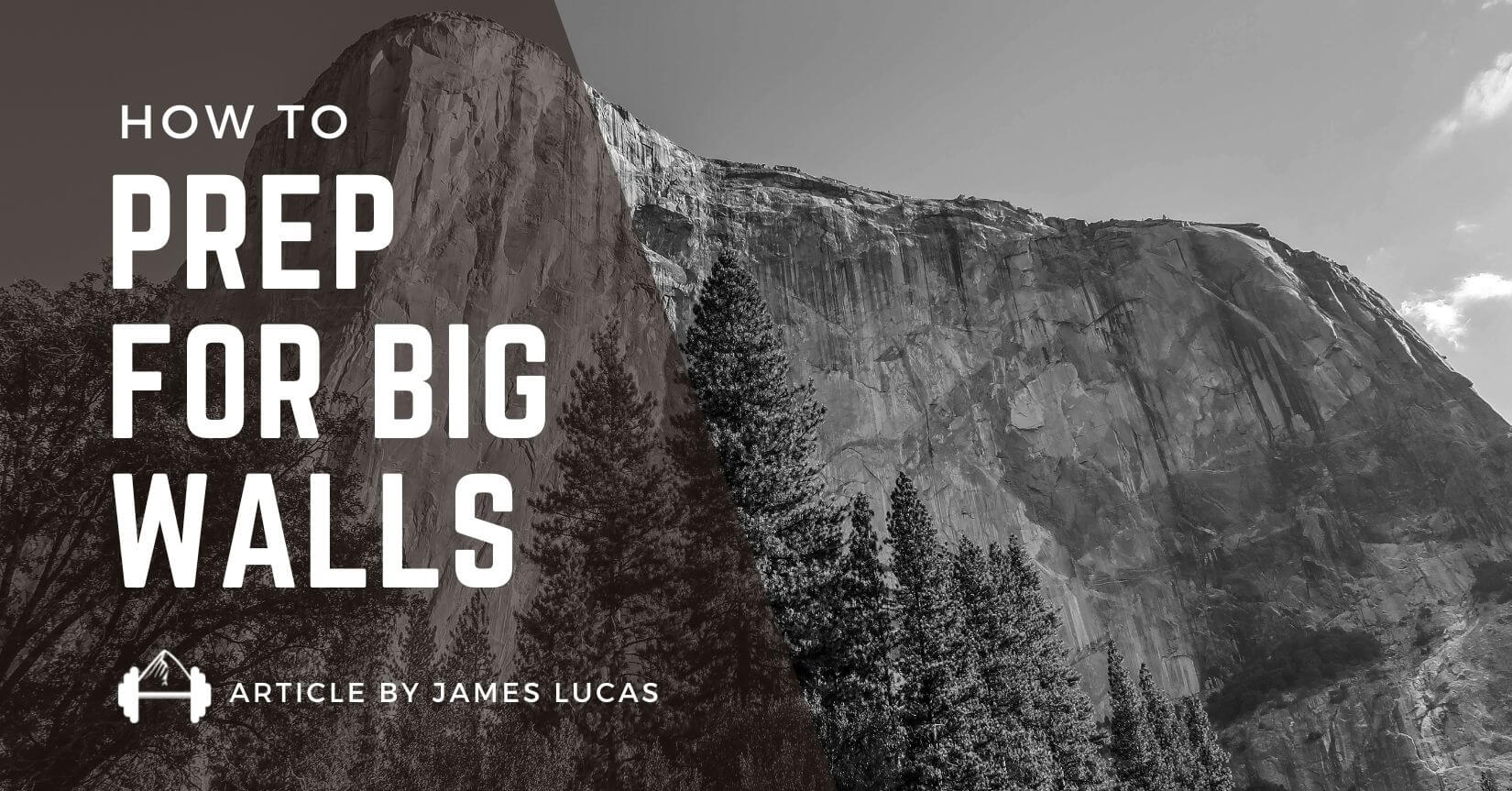Preparing for Big Wall Free Climbing: The Basics
by James Lucas
Yosemite’s El Capitan serves as the crucible for big wall free climbing. With plenty of sunshine and typically stable weather, getting a chance to free climb the granite monolith is often the height of many climbers’ careers. Getting to the summit of a free El Capitan route requires serious effort, though.
Last fall, Eddie Taylor made plans to check out the Freerider (3,000’ 5.13a) on El Capitan with ambitions to eventually send the route. Unfortunately, the objective was too big for his time off and the short weather window, so he headed to Zion and made a successful ascent of Moonlight Buttress (800’ 5.12). While he didn’t achieve his long-term goal, he made progress towards free climbing El Cap.
Big routes take a significant amount of preparation, and free climbing El Capitan is a career highlight and aspiration for many climbers. But getting there takes strategy, trad climbing skills, and some essential free climbing techniques.
Strategy – How Do You Eat an Elephant?
The first step in taking down a huge goal like climbing a three-thousand-foot wall is to break down the objective into sections. Forget about sending the entire objective; instead, think about the individual parts. What are going to be the most difficult parts of the climb? Is it a long endurance route with sustained climbing like Moonlight Buttress (800’ 5.12) in Zion? Are the pitches technically demanding like Final Frontier (900’ 5.13b) in Yosemite? Are the cruxes short with lots of moderate climbing between them like on The Original Route (1000’ 5.12-) on the Rainbow Wall? After sorting the general theme of the route, then start taking the next few steps of eating an elephant. Take one bite at a time.
Like most types of climbing, building a base of big wall free climbs helps immensely. It’s common for a lot of climbers to just jump to the biggest objective. This approach may seem like a good idea, but it often leads to failure as climbers tend to not be quite ready for the enormity of their objective. Instead, take the time to build up a pyramid of both longer, easier routes and shorter, harder routes. These are the smaller bites of eating an elephant. These ascents will help you understand what of the two major parts of big wall climbing you may need to work on.
Traditional Climbing Efficiency
A big factor in big wall free climbing is the ability to deal with the logistics of such a big climb. Belay changeovers and even more so, hauling, add a significant amount of time and challenge to the actual route. There are a few factors to consider when planning.
Often climbing long traditional routes effectively comes down to the climbers’ ability to deal with belays efficiently. More than just restacking the rope and handing off gear, climbers need to be able to properly fuel and recover at belays. Also, climbers should consider how they want to lead the pitches. Should the climbers swing leads with each climber leading every other pitch, should one climber lead a couple or more pitches in a row while the second follows and then swap in a block style, or should one climber lead the entire route while the second supports? These tactics will determine the ease of the climbing and the experience.
After looking at the number of pitches, the best ledges for resting, and determining how long each section will take to climb, figure out an idea of how long the climb will take. How long you stay on the wall will determine the amount of food, water, and general kit you need. Often, carrying additional weight can slow you down significantly more than anticipated. The extra jacket around your waist or the additional liter of water makes each move more difficult. Over the course of the day or multiple days, those little bits of weight add up.
Consider the best ways to cut down on weight so that the climb can go a bit faster. Think about the hauling difficulty on a route. Slabby, low angle terrain tends to be heinous to haul on even with a good mechanical advantage. In many cases like these, a third person can be brought on the team to just haul or the second person runs a supporting role. Better yet is considering cutting out the time consuming and pain of hauling altogether. Oftentimes, three-day or shorter routes can be cut down to a single day if the climbers move quickly and forgo carrying the extra weight of bivy gear. It’s important to realize that recovery happens more slowly on the wall, and it can be difficult to recover after multiple days on route.
Becoming better at these factors tends to involve a significant amount of experience. While there are tricks that can help speed up the process, the practice of making belay changes and hauling in the field will help significantly. It’s another reason to climb a few smaller big wall free climbs before hopping on an El Cap objective. Block leading, hauling well, and understanding how to recover on a wall require time on the rock. Practicing changeovers and hauling at hanging belays by setting up anchors at the gym can help significantly and are a worthwhile use of time to prep for longer free climbs.
Free Climbing
Free climbing at one’s limit on a wall tends to be more difficult than climbing straight off the ground due to the exposure, the cramped belays, and the less than straightforward manner of the climbing. Add in the discomfort of being on the wall all day, getting short-roped because the lead line and haul line got tangled, and the climbing becomes even more daunting. However, there are ways.
Big wall free climbing requires a wider range of skills from offwidthing, to slab climbing, to pumpy sport crack climbing on marginal gear. Knowing the climbing type will help significantly with the actual free climbing endeavor, but in general you want to establish a very wide base of difficult single pitch routes to prepare for a wall at the same difficulty.
Due to the length of most El Capitan free climbs or even shorter wall routes, having to redpoint pitches becomes a grueling process. Pulling the rope and trying each pitch multiple times amounts to a staggering amount of climbing. One of the biggest skills to have is the ability to onsight. Second to that comes the ability to figure out efficient beta for a pitch or sequence in a short time and sending the pitch second try.
The best way to train this skill is to climb a variety of climbing styles at 60 to 70% your limit, focusing on doing the pitches with a minimal amount of effort. At times this means fighting hard on an onsight so you don’t have to try again and at times it means hanging all over the pitch, cleaning it, sorting beta, and then sending it quickly on a second try. Having a wide base of skills will help immensely.
Due to the hard climbing and the logistical challenges, it’s best to over prepare for free climbing on El Cap or on any big wall. This is the biggest shortcut to climbing hard on long routes.
About the Author
 James Lucas worked as a senior associate editor at Climbing Magazine and now does freelance work for many publications. Beyond being an obsessive boulderer and sport climber, James is an avid photographer and travels around the country in search of good conditions and excellent rock quality.
James Lucas worked as a senior associate editor at Climbing Magazine and now does freelance work for many publications. Beyond being an obsessive boulderer and sport climber, James is an avid photographer and travels around the country in search of good conditions and excellent rock quality.
James has free-climbed dozens of difficult big wall routes, from climbing El Capitan’s Freerider (5.13a) in a day, to establishing Fifi Buttress’s Final Frontier (5.13b) to onsighting the Taghia Gorge’s Les Riveres Por Pres (5.12c).







Leave A Comment